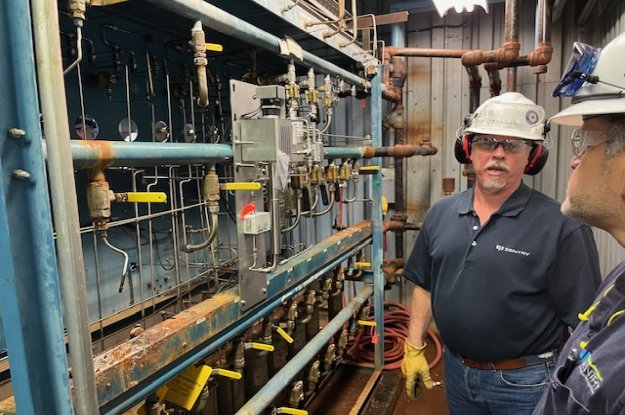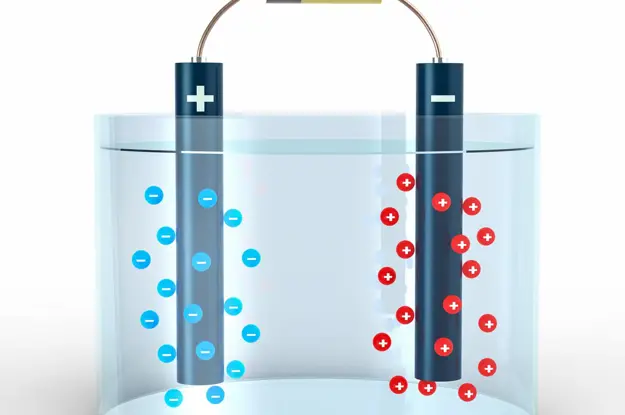Importance of Monitoring Dissolved Oxygen in Boiler Water Systems

Dissolved Oxygen Damage
In a high-pressure boiler system, one of the critical parameters to monitor and control is dissolved oxygen (DO). Sampling boiler feed water for DO helps ensure the functionality of your equipment, quality of your product, and safety of your personnel.
The Dangers of Dissolved Oxygen
Dissolved oxygen is extremely reactive and is critical to monitor and control within steam-generating systems. If levels are left unchecked, DO will destroy a boiler system. Even low concentrations of DO can be highly destructive, as the high temperatures and pressures in steam-generating systems accelerate the rate of corrosion.
Dissolved oxygen causes localized corrosion and pitting of metal system components. Pitting is a concentration of corrosion in a small area of the total metal surface, effectively drilling a hole in the metal. Over time, DO can cause an oxygen tubercle, or scab, to form over the point of the original attack. Once the scab forms, the corrosion will continue underneath it, even if the system is then properly maintained.
Because of this, power plant operators strive to reduce dissolved oxygen concentrations in boiler feed water to just a few parts per billion (ppb).
The Importance of Monitoring D.O. in Boiler Water
It can be difficult to measure and monitor DO in a high-temperature, high-pressure environment. What’s more, water samples must not be exposed to the air.
Atmospheric oxygen would contaminate the sample, causing erroneously high results. Therefore, the collection of a grab sample is unacceptable for DO analysis.
Monitoring and sampling feed water for DO helps:
- Prevent excess DO from causing corrosion within their system, thus damaging equipment
- Ensure dissolved oxygen mitigation efforts are working
- Ensure online analyzers are producing accurate DO measurements
Dissolved Oxygen Control Methods
Two primary ways to reduce DO in boiler feed water are mechanical and chemical controls.
Mechanical deaeration. This is usually the first and most economical technique employed by plant operators to remove DO. Deaeration equipment heats the feed water and vents the released gases, including oxygen. Properly maintained deaerators can typically reduce DO levels to as low as 10 ppb.
Chemical controls. Plant operators often supplement mechanical deaeration with chemical treatment, to raise the pH of the system using ammonia in the latest All Volatile Treatment (AVT) regimes. The controlled DO in the high pH system then helps form and maintain a desired protective layer on the equipment. These treatment regimens also help to lower the risk of Flow Accelerated Corrosion (FAC).
Because mechanical deaeration and chemical controls might not adequately remove all DO from a system, routine monitoring of dissolved oxygen levels is crucial.
Online analyzers. Online analyzers offer continuous DO measurement. Each online analyzer continuously monitors a single location, typically near the discharge side of the boiler feed water pump.
Portable test kits. A CHEMetrics portable test kit can be moved from one sampling point to another to allow for testing at the deaerator or any potential leakage points throughout the system. The test kit can also be used alongside online equipment to ensure sensor drift is not taking place. CHEMetrics test kits are equipped with a special “sampling tube” that’s vertically mounted and connected to the sampling port of the boiler system.
CHEMetrics portable test kits feature convenient “snap and read” self-filling ampoules, offering plant operators a rapid, reliable, maintenance-free means of determining ppb levels of DO within one minute. Test kits provide all the components necessary for analysis and do not require calibration by the operator.
A continuous flow of sample through the tube prevents contamination from atmospheric oxygen. When the operator submerges the vacuum-sealed ampoule in the flowing sample and snaps the tip, the sample is drawn into the ampoule.
The highly sensitive colorimetric Rhodazine D™ reagent reacts instantaneously to produce a pink color. The color intensity is visually matched to a color comparator to determine the DO concentration. CHEMetrics also offers a Comparator Light Source (CLS) for use in low-light conditions.
Related Posts

Power Generation
CASE STUDY: Replace Your SWAS Panels
In terms of total annual net electricity generation, this power plant is ranked #44 out of 11,979 power plants nationwide.
Read More
Power Generation
Do You Trust Your Process Analytics?
Accurate sampling all depends on regular maintenance. Are you maintaining the critical instruments that your plant relies on?
Read More
Power Generation
Cation Conductivity vs. Specific Conductivity
Conductivity is useful as a general measure of stream water quality. Each stream has a relatively constant range of conductivity. Once a baseline is established, it can be compared with regular conductivity measures.
Read More